Back in the ’50s, I spent my toddler years with a railroad in my front yard. It was that kind of neighborhood. The main line lay just across the street from our white picket fence. One or two long trains roared by every hour. The house shook. I loved it.
And there I was: two-years-old-and-change, standing by the tracks and waving. The engineers would reward me with a blast of the horn. Mom would have freaked, of course, but she had endless laundry to occupy her while I opened the front gate and skipped over to the tracks. I could circle around behind the abandoned railroad station for cover.
Yes, I was a rail buff. I still am.
California built railroads, and the railroads built California: connected it to the rest of the nation, connected the farms and mines and factories to the port cities, moved people around. They still do most of that. So we owe the railroads a lot, even if we almost never set foot in a railcar. Railroad t-shirts are rare in this state.
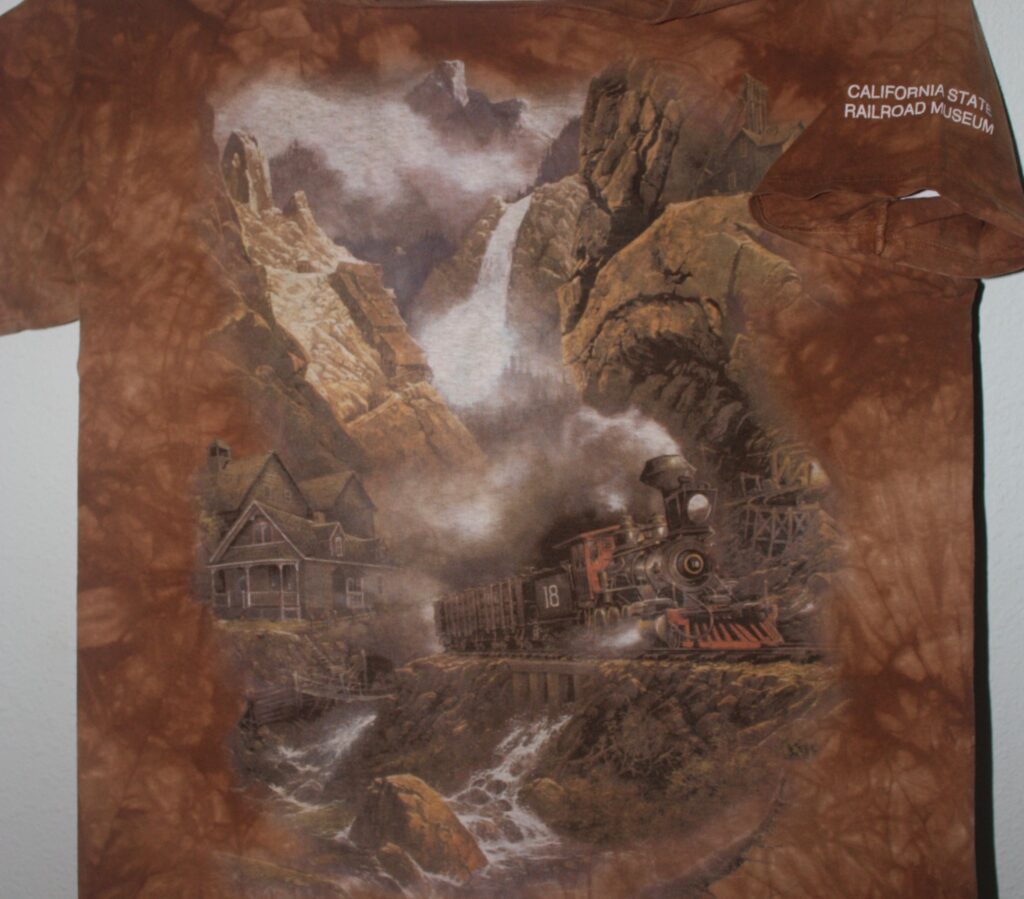
But railroad buffs are not. And in California, some of them have money, political clout, or both. This tee comes from the California Railroad Museum in Sacramento, which is quite a place. If you ever have to be in Sacramento, stop in and salvage your trip. See locomotives and cars that you’ve only ever seen on an electric train layout: but full size. The museum sells a lot of t-shirts, too. The one shown above is one of many.
And there are other kinds of railroad “museums.” Down here in Santa Cruz County we have either a very tiny steam railway, or the world’s largest model train setup. Your pick, of course. But I pick “largest model train setup,” although you can ride it.
It starts with a guy named Al Smith: career high school teacher, former Southern Pacific railroad employee, scout leader, lifelong train buff — and heir to the old Orchard Supply Hardware chain based in San Jose. He eventually took over as CEO; and when an offer was made for the entire chain, he took it.
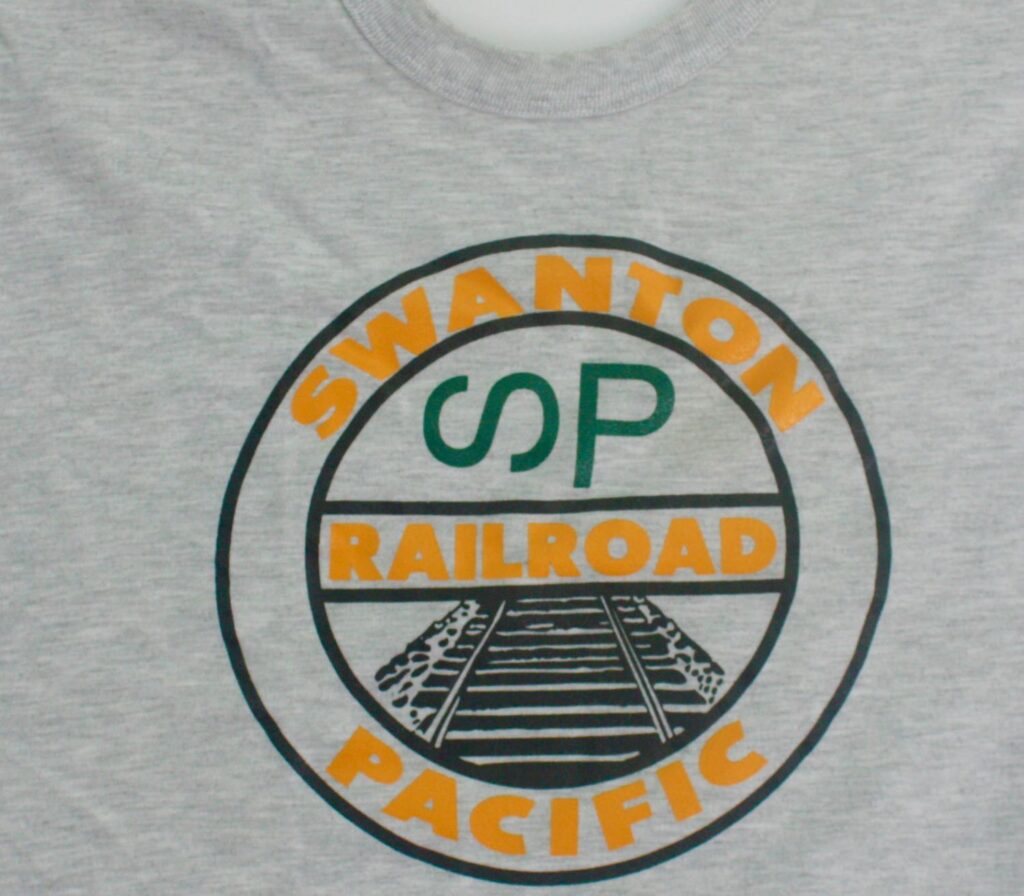
And Smith took his money, and his time, and the family ranch in Swanton (a secluded area in Santa Cruz County), and over a period of years built a mile-long 1/3-scale steam railway. He called it the Swanton Pacific: its name and logo are an homage to the Southern Pacific Railroad’s classic “sunset” logo.
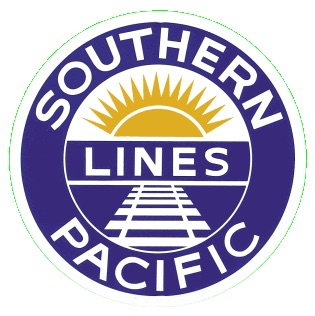
The Southern Pacific built many rail lines in California — including the western half of the first Tranconteinental Railroad. From them it fashioned a lucrative transportation monopoly that lasted a century. When I was a tot, it was Southern Pacific trains that zoomed past my house each night. The SP is now gone, eaten by the Union Pacific — the railroad that built the eastern half of the Transcontinental Railroad.
Smith did not build everything himself: he had obtained several rather awesome working 1/3-scale steam locomotives that pulled sightseeing trains at the 1915 Panama Pacific Exposition in San Francisco. And he attracted rail enthusiasts to restore the locomotives, develop the railroad and of course have the time of their lives.
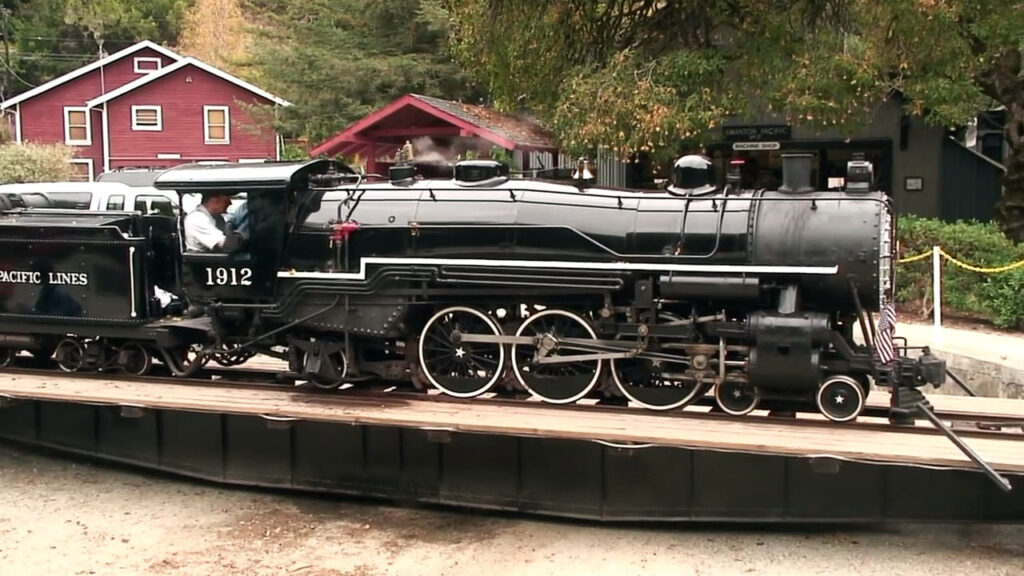
Through the ‘80s, locomotives were restored, cars were built, and more. Well over of a mile of track, a trestle, roundhouse, machine shop, and a station also appeared. Money is good for things like that.
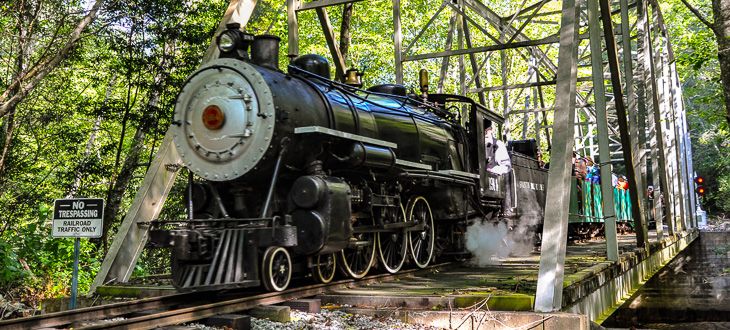
The Swanton Pacific has never been freely open to the public. But sometimes you could ride for free anywy. Back in the ‘90s, when the little railroad was less widely known, the word would sometimes go out to “just show up on New Year’s Eve” or some other propitious date
And you’d get a ride in a open car behind a steam engine, with the smoke sailing by close over your head and glowing in the moonlight while you rattled across the trestle and peered in the darkness below. Afterward, when you were chilled to the bone, there might be hot cider.
Eventually the informal crowds got too big,. Public events at the SP these days now come perhaps once or twice a year. And there are tickets. Limited tickets.
When Smith died, he left the ranch to California Polytechnic State University, his alma mater. The railroad remains on the ranch as a tenant non-profit with a board and by-laws and a corps of volunteers. Cal Poly students also get involved.
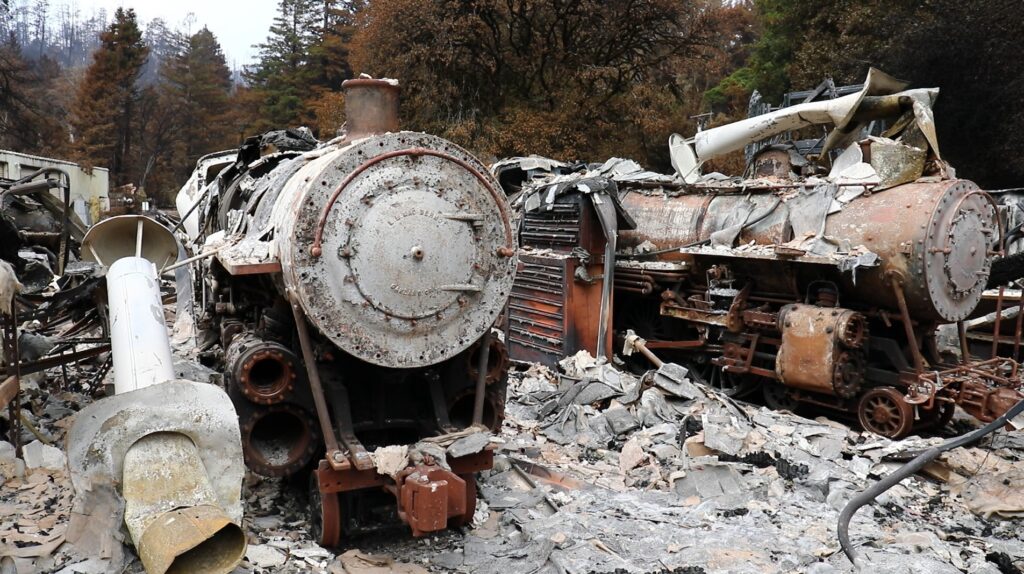
Sadly, forest fires in 2020 severely damaged both the ranch and the layout. Fire burned key railroad buildings and severely damaged the rolling stock and most of the locomotives. But the damaged locomotives seem restorable, some buildings remain, and the track and trestle are still there. There is hope for the future.
The Swanton Pacific is a sort of heaven for rail buffs. But there are other rail buffs with other heavens. One particular breed avoids both museums and model trains. They like the real trains, the active ones. In the real train yards. You know: private property. They like to… decorate them.
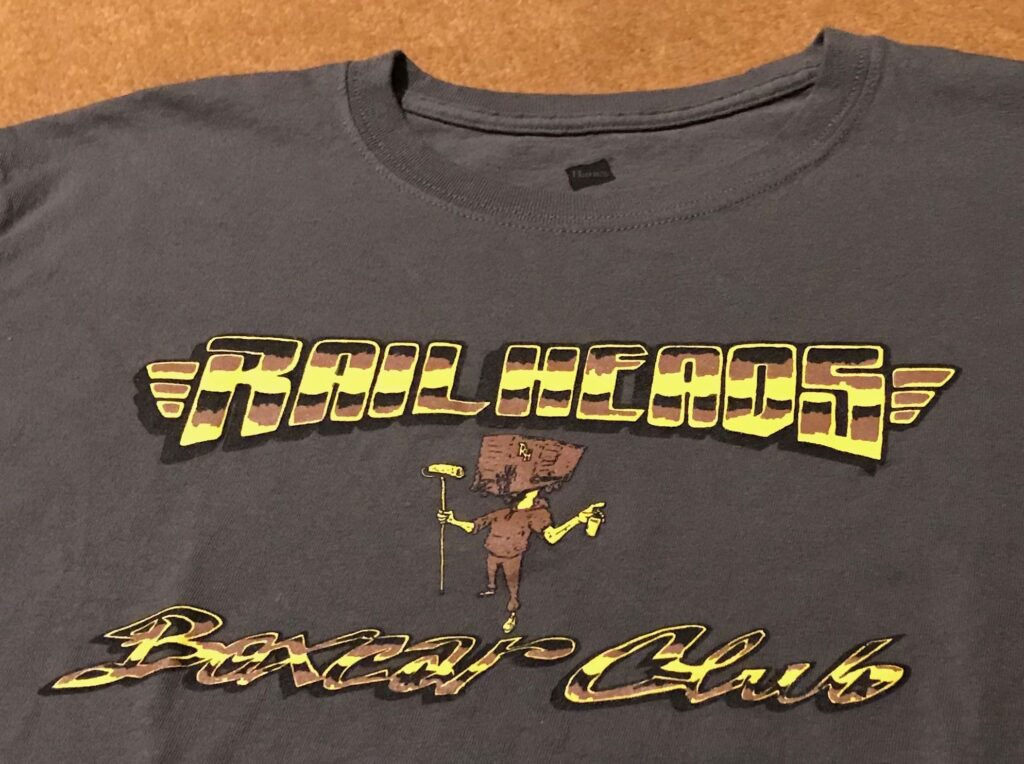
I was interested to learn that certain graffiti writers (that’s the term) specialize in railroad freight cars. One of these may be the gentleman above with a boxcar for a head, a spray can in one hand, and a paint roller in the other.
“Railheads” is the name of a railcar graffiti crew — possibly from Southern California, possibly not — that probably printed this t-shirt for itself and its friends.
(“Probably” and “possibly” applies to all this information. The graffiti world is an underground, its freight car graffiti section even more so. Whatever valid search terms I could find on the Internet led me into a forest of freight car graffiti crew hashtags and railcar photos, the occasional video and not much else. After all, freight car graffiti crews have to break several kinds of law to practice their art and craft.
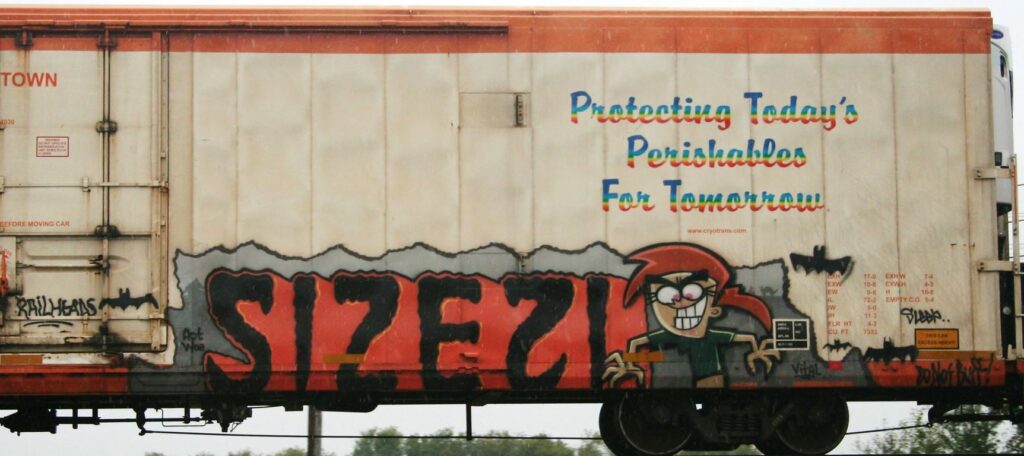
Freight car graffiti has its advantages: you have a huge surface to work with. Your art will move many thousands of miles around the country and past the eyes of millions of people. If you preserve the identification codes painted on the side of the freight car, your graffiti may be left alone for months or years.
But you have to know how to avoid rail yard security patrols, and how to get past the train yard fences and gates. You have to know how a train yard works, and how long you can expect the car to stay unattended. All this can be much more challenging that painting the wall of a hardware store, and even that has its hazards.
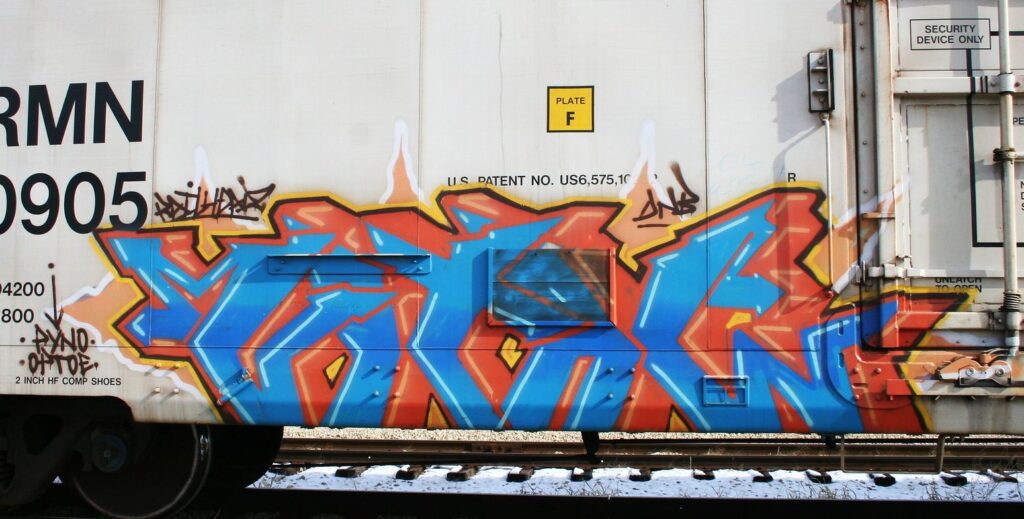
Also, large graffiti jobs need two or more artists working together if the work is to be done quickly. Almost always, it must. Thus, the Railheads crew and many other crews like them. Many.
But as the actors say, what’s your motivation?
Your motivation is that you’re an artist and a rebel (and maybe a punk) and like the thrills. You like being outside the law. Some old school graffiti writers look down on newbies who buy cans of spray paint instead of stealing them.

Painting on freight cars can also get you renown and respect: from other freight car graffiti crews, certainly; from people everywhere who stare at passing trains; and even from the art world, which increasingly honors graffiti as “outsider art.”
Some of the best graffiti writers show and sell work in respectable galleries while still writing graffiti in the train yards. Their work might appear in national publications and on prestigious websites. They may be interviewed.
That’s the power of exposure. And nothing’s more exposed that your name or handle transformed into a massive work of graffiti art rumbling across the country through city after city.
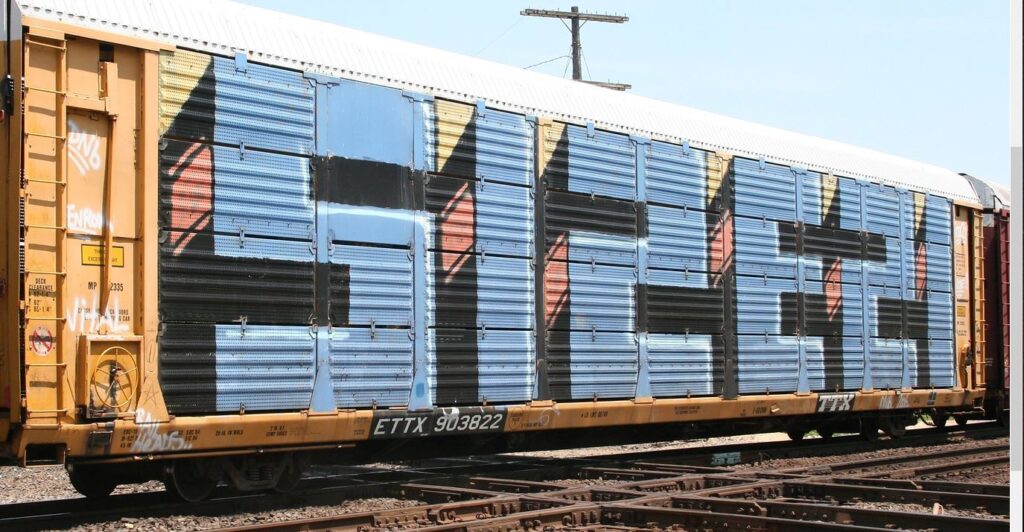
Or your crew’s name, 40 feet long down the side of a boxcar, with your tag and the other crew members tags right alongside: the Railheads.


Hey Jim,
I used to have in the shop a whole book of railroad graffiti. While I can appreciate the artistic ability it takes to expertly tag a whole side of a railroad car, I have to say I’m not part of that culture and most of it tends to look the same to me. The fact that some graffiti artists have moved up in the art world doesn’t seem all that surprising these days. Makes me wonder if some of the old Impressionists tagged the sides of some buildings back in the old days. These would be the Van Goghs and Latrecs that are truly lost in time. Too bad they didn’t think of making t-shirts back then.
Commenting on another blog entry, I used to own quite a few Bob’s Big Boy gift items – had cufflinks, money clip, a couple of night lights, and a small rubber figurine. Always meant to get a t-shirt, but missed out. The Concord Bob’s went away years ago and I’m not going to go online to purchase one of those. But that blog entry took me back in time, for which thanks. Always enjoy your t-shirt view of history. Great stuff!